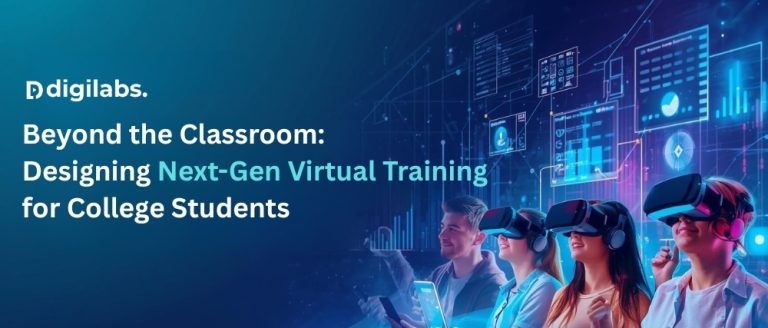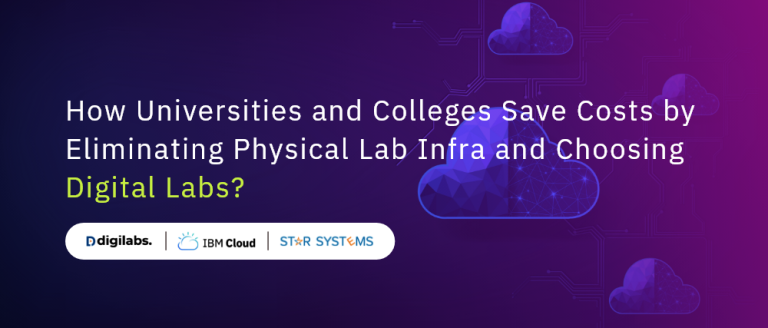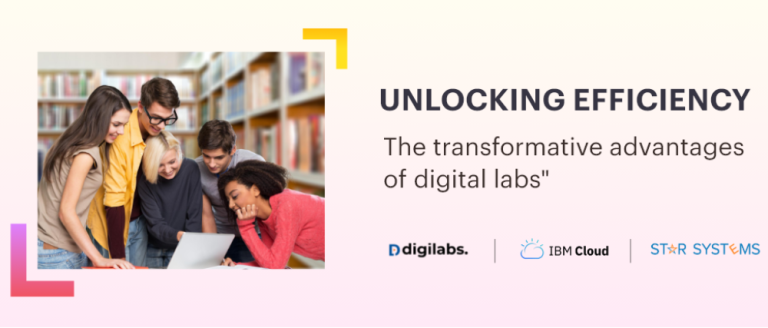Cloud virtual labs are rewriting this script, offering a fast-track to programming competency that mirrors the way contemporary software development operates. This change in emphasis, coupled with the collaborative and interactive nature of cloud platforms, offers learning environments that are both more compelling and more effective than ever before.
No More Install Headaches: Just Open the Lab and Start Coding
The most direct advantage cloud virtual labs offer is the removal of environment setup friction. with a few seconds in their web browser, students have at their disposal a fully set-up development environment, the cost of beginning coding practice plummets to almost zero. This immediate availability revolutionizes how students work on coding assignments and projects.
Take the example of a normal case where students are to learn Python web development. On a traditional platform, they would have to install Python, create a virtual environment, install web frameworks such as Django or Flask, set up a database, and make all these pieces play nicely together.
This could take hours and typically involves debugging platform-related issues. with cloud virtual labs, however, students can be presented with an environment that already has Python, frameworks, databases, and development tools pre-installed and integrated.
Real-World Development Environments
Cloud virtual labs can mimic professional development environments with an authenticity that’s impossible to attain in conventional educational systems. Students can utilize the same tools, frameworks, and workflows used in real software companies, which gives relevance to their learning process instantly.
Capable of delivering full environments that encompass all these elements to enable students to see how various components of a system are related instead of learning each one separately.
Cloud virtual labs have the ability to incorporate Git workflow from the start, enabling students to exercise branching, merging, and collaborative development habits as part of standard coding practices.
Collaborative Learning Accelerated
Facilitate collaborative learning experiences that reflect these industry practices while offering educational advantages that segregated learning cannot. Real-time collaboration capabilities facilitate more than one student to share the same codebase at the same time, exercising the communication and coordination skills necessary for team development.
Peer learning platforms expand in cloud infrastructures where students can share their work with ease, peer-review one another’s code, and learn from various problem-solving strategies used to solve similar issues. This learning opportunity from varied problem-solving strategies enhances the establishment of programming intuition and best practice.
Cloud virtual labs are particularly adept at delivering immediate, high-quality feedback on coding problems. Automated testing can be plugged directly into the learning environment, offering instant confirmation of students’ solutions and explicit feedback on what is correct and what requires work.
In contrast to regular assignments that may be turned in days or weeks for a grade, cloud virtual labs can return feedback in seconds after code runs. Students can try out hypotheses, observe immediate results, and rapidly iterate on their answers. This close feedback loop speeds up the trial-and-error cycle that is central to programming skill development.
The inclusion of debugging tools within the learning environment ensures that students learn essential troubleshooting skills right from the start. Instead of using print statements or simply guessing problems, students can employ professional debugging tools to step through code, inspect variable states, and learn program execution flow.
Interactive code execution features allow students to test things out freely without risking a breakage. With virtual environments being immediately resettable, students are empowered to take risks, experiment with other methods, and make mistakes without penalty.
Personalized Learning Paths
Provides individualized learning experiences that respond to each student’s progress and learning preferences. while traditional in-class instruction proceeds at a standard pace, cloud-based platforms are able to monitor student performance and modify challenge levels.
More advanced students have access to extra exercises, delve deeper into more intricate situations, or investigate areas of particular interest in greater depth. Those students requiring extra practice with underlying principles can be given more exercises and guidance without slowing down the other students or feeling self-conscious about their own pace.
The information produced by cloud virtual labs offers insights on prevalent patterns of learning and challenges, allowing ongoing improvement of course materials. Instructors are able to see areas of concepts that persistently confuse students and create focused interventions or supplementary materials to fill these gaps.
Game elements can be seamlessly applied in cloud virtual lab experiences to deliver encouragement and interest that standard coding education may not provide. Progress meters, badges of achievements, and challenges against other students can keep students interested and motivated to practice every day.
Access to Advanced Technology
The quick development of programming languages, frameworks, and tools frustrates the ability of conventional schools to keep up with their curriculum. Cloud virtual labs can deliver real-time access to new technology, so students learn skills that are directly applicable to current industry requirements.
Students can test out new frameworks, experiment with new programming languages, and use bleeding-edge development tools without necessitating investment by the institution in new hardware or software. Exposure to new technologies guarantees graduates are ready for the tools they will be using when they enter the workforce.
Project-Based Learning Enhancement
Real-world software development is accomplished via projects that last weeks or months, involve numerous files and pieces, and need structured planning and organization. Cloud virtual labs are best at facilitating project-based learning methods that reflect professional development techniques.
Students can tackle large projects that would be heavy to implement in a standard classroom environment. The long-term stability of cloud environments allows students to come back to their projects over several sessions, developing sophisticated applications piece by piece and learning about software architecture, project structure, and long-term code upkeep.
Easy to sharing and displaying projects offers opportunities for peer-to-peer learning and recognition that encourage sustained participation in coding challenges. Students are able to develop portfolios of work, which reflect their abilities and potential employers or advanced educational institutions.
Students can get hands-on experience deploying their applications to cloud platforms, learning the end to end software delivery process instead of thinking deployment as an after thought. with an end-to-end view, students learn how their code is part of bigger systems and how coding choices affect real-world applications.
Scalable Assessment and Progress Tracking
Traditional assessment of coding education usually involves labor-intensive review of assignments submitted, which causes bottlenecks and delays feedback, as well as restricting the volume of exercises that students can tackle. Digilabs allow for automated assessment software that can mark student assignments in real-time and deliver precise feedback on correctness and code quality.
Progress monitoring features give insights into student learning that are impossible with conventional methods. Teachers can spot struggling students early and offer individualized support, and identify high performers who may need a challenge.
Continuous Learning and Skill Updates
Practice of software development necessitates ongoing learning to keep up with changing practices and technologies. Cloud virtual labs install learning routines and deliver environments that facilitate constant skill-building throughout a programmer’s professional life.
The convenience and access of cloud learning environments motivate students to keep testing new technologies and developing skills beyond formal education programs. This groundwork in persistent learning is critical for long-term success in technology professions.
Conclusion
Cloud virtual labs constitute a foundational breakthrough in the way we teach coding, solving age-old problems along with delivering new features that significantly boost learning. By erasing setup resistance, offering realistic development environments, allowing for productive collaboration, and accommodating differentiated learning paths, these environments create learning experiences that are both more enjoyable and more productive than what’s possible with conventional methods.
For learners starting their coding adventure, cloud virtual labs provide the quickest, most interactive route to programming competence. For teachers and schools, these environments supply the means to provide coding instruction that is responsive to today’s technology trends and that equips students for tomorrow’s challenges and opportunities.











